Duo What You Will
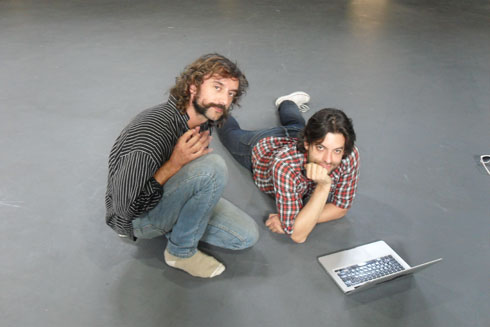
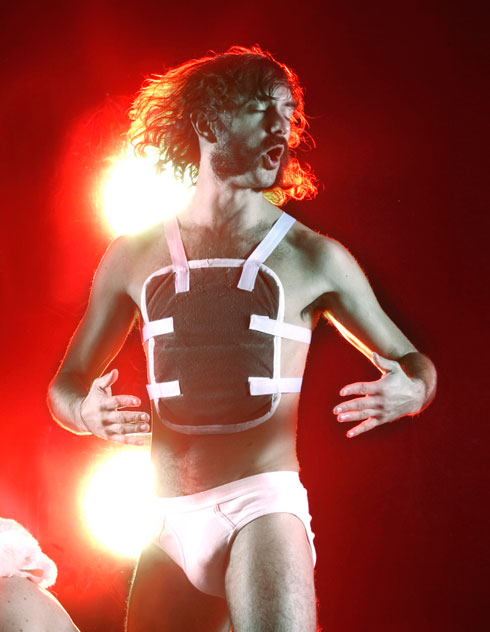
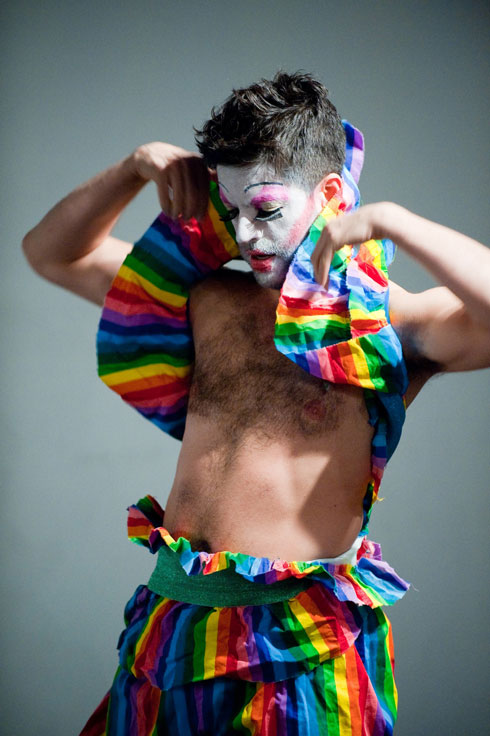
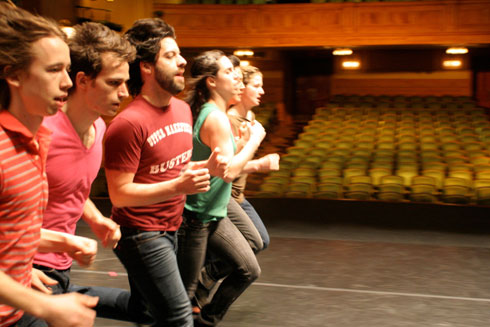
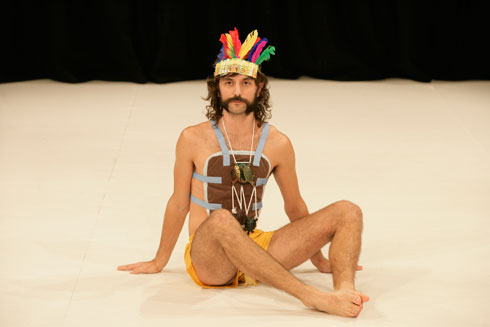
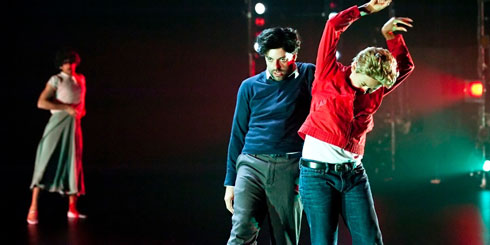
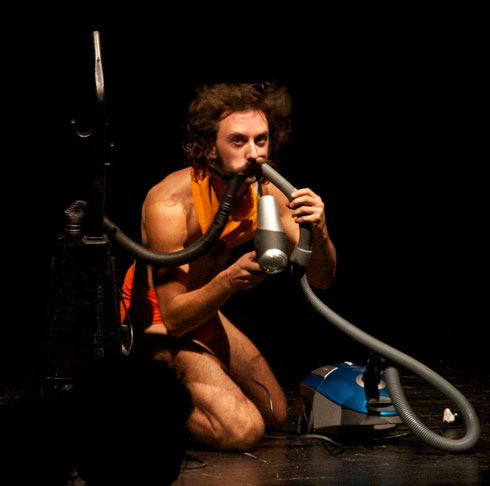 Text: Yahna Fookes Images: Miguel Gutierrez & Luke George
Text: Yahna Fookes Images: Miguel Gutierrez & Luke George
Based in New York and Melbourne respectively, Miguel Gutierrez and Luke George are kindred spirits. Movers and shakers of the contemporary dance scene, the two dancers/dance-makers are located at opposite ends of the globe yet somehow manage to remain intrinsically connected via “the telekinetic power of [their] minds.” They are paramount figures in the local and global dance community, shifting conventions and challenging perceptions that traditionally surround what we know and classify as dance. They are highly evolved and forever evolving.
Despite the distance, their individual practices seem to parallel. Each is absorbed in ideas relating to “presence, attention, the non-rational, the body as the mind, the liveness of performance, being with an audience, the phenomenology, biology and neurology of the body in action and what it means to be seen”.
My first impressions of Miguel Gutierrez were during a weekend intensive workshop in Vienna in 2009. This was soon followed by Berlin dance festival Tanz im August, where I stumbled upon his Australian counterpart Luke George at a questionable performance art show. The two have since been granted a culture-LAB residency through Arts House. In February 2011, the brotherhood reunited to focus on dance and experimentation. With no expectation for a set outcome, the duo discuss their endless collaborative possibilities.
Yahna Fookes: Can you explain why you feel contemporary dance is such a communicative form of expression?
Miguel Gutierrez: I’m not sure that is a communicative form of expression as such, but it happens to be the one that I have lived in and dedicated myself to. I love this about dance, that it resists explanation in language; that it must be perceived somatically to be fully understood; that its sense of being understood is not about proving something that can hold up in any way in the real world. It’s some kind of extra-logical space, anarchic in a way, and I like that. Most of the time I think people use dance in a pretty uninteresting way, with the desire to display something. While of course it is a visual medium, it’s not the display that is my primary interest, but rather the container of energetic reflection that dance instigates.
YF: The two of you collaborate extensively, both together and separately with other artists, many of whom are not dancers. Why is that? Is there a particular strategy behind this?
Luke George: I think dancers are inherently collaborative in their process. To be clichéd, there’s a great deal of intuitive communication that takes place between them in discovering and developing ideas. I love collaborating with dancers. But it’s also an artform that, like some other artforms, remains steeped in the paradigms of its historical narrative. So naturally working with artists from other forms is completely exciting, turbulent and risky. Also, engaging with people who aren’t necessarily artists attracts me. I worked in a regional community context with young people in Tasmania for years. All our projects originated through the dialogue between us and through collaboration with the larger community to create enormous site-specific performances. There’s something exciting about approaching work through a tension between taking known and unknown routes. Surely that would be essential to any creative process?
YF: Miguel, could you tell us more about ‘Miguel Gutierrez and the Powerful People,’ a collective of 40-plus artists with whom you have an ongoing creative relationship. How did this come about? What is the common ground you feel you share with these conceptual artists?
MG: Well, I’m not really running a collective. I just don’t think of myself as a company director because I work project to project with different collaborators, although there have been certain people who I’ve worked with a lot. When I was younger, I never wanted to have a company. I would hear people I knew talk about how they were going to finish school and start a company and I would think, “Huh, aren’t you interested first in finding out what the hell your work is?” I was hatefully judgmental like that.
It was truly a happy accident that, in 2001, a bunch of incredible dancers and a composer who I knew from different contexts in my life came together to become the first incarnation of the Powerful People. That particular configuration lasted for a couple of years so I guess it was kind of like a company, but then I started changing the way I thought about my pieces and started working with different populations of folks. Though again, some people have been consistent.
I like intimate working relationships. I tend to gravitate towards super smart artists who are not flashy about their smartness. I like it when folks are unpretentious and capable, and while I love having the collaborators around as much as possible, I’m a big believer in giving people space to have their own process. That sounds kind of new age-y but it’s true.
YF: You’ve just got together for the second time since August 2010. Can you elaborate on the creative process you employ in your collaborations?
LG: Our first process was to one day arrive at the studio at an agreed time and have already begun an improvisation. The only rule was that we couldn’t use any recognisable language to communicate. After four to five hours of improvisation, we came back the next day to discuss it. In our discussion we avoided pinpointing events in the improvisation, instead talking more about how we experienced being in it – our perceptions, our senses, our actions, our thoughts.
We talked about aliens, expanding our brains, receiving messages mediated through TV Week magazine, how Cate Blanchett’s acting is on a cellular level, transmittance of ideas without language, shifting furniture with the new telekinetic powers of our minds, modes of performance, duration, getting ridiculously fit and how we perceive ourselves and our environment.
I imagine our next two weeks will pick up where we left off. Probably chopping up the durations, rules and configurations.
YF: In the past, the two of you have made works separately but with a similar understanding and themes. For instance, both Now Now Now (George) and Everyone (Gutierrez) explore the notion of being in the present. What focus points are of interest in this coming venture?
LG: That’s so funny, you prompted me to read over Miguel’s notes for Everyone and I’m amazed how close the language for Now Now Now is. Argh! It’s funny how things seep into your conscious/unconscious and before you know it, you’re part of a shared language and understanding that’s bigger than you are.
I feel that we are interested in a space that resists judgement and evaluation. That space is either entirely liberating or utterly confusing. Right now I know that Miguel is interested in the brain. I’ve been reading and have come across neuro-plasticity, which is the theory that our brains and cells aren’t hard-wired and can continue to learn and evolve. I’ve also been into the supernatural.
I’m working on dancing at a cellular level, where my cells are interacting with and affecting the atoms of the space around me, the room I’m in and the people I share it with. I’m also interested in people communing, coming together and participating in collective experiences. What can happen, what does that feel like, what’s its quantifiable energy? You could say it’s sort of a science-fiction experiment in performance and audience participation.
YF: How do you see the face of dance changing?
MG: It’s so hard to answer this question because dance has many faces; it’s so specific to its context and culture. I also think that economics plays an enormous role in dance being able to change. How can we perceive it’s changing if there isn’t support for it? I travel a lot and am still very much rooted inside a history, sensibility and value system shaped by my choice to live in New York. It’s always hard for me to tell how things are changing in a large way because I often think we see things in the way that we want.
Nevertheless, I’ve noticed in the past twenty years that dance is simultaneously getting richer and poorer. With art subsidies being cut, I always hear about how “performance is dying” or “audiences are dying”, yet in my travels I meet more people in the field who are creating, presenting and proposing ideas. In many of these cities, I have performed in theatres full of folks that I didn’t know. They’re not all my Facebook friends so they must be coming to the show for some fucking reason.
In the US, there’s the phenomenon of mass cultural representations of dancing in TV shows like Dancing with the Stars, So You Think You Can Dance and Dance Your Ass Off. I think this means that the people in contemporary dance who are actively resisting the exhibitionistic or entertainment tendencies of these representations have a harder time proving why they do what they do. When you tell people you’re a dancer they tend to think you’re insanely fit, flexible, super strong and in a constant state of dancing. I still find it challenging to explain that my expressive medium happens to be about the relationship between the body, movement and other media. My interest in dance is not caught up in notions of being heroic or extraordinary.
YF: What issues are you most passionate about, to the extent where you want to explore them in your art and have people engaging in conversation?
MG: I am interested in getting people to talk about how truth, belief, mystery and confusion are somatic experiences that can be accessed, constructed, known and analysed. I am also interested in debunking traditional notions of rationality and importance, in giving ‘non-dancers’ experiential access to their bodies and getting dancers to make smarter and more sophisticated choices about how to approach dance.
LG: And about how we are. How we are living our lives. How we are in this world. How we are with each other. How we are in this moment and how we are going to move forward. There’s so much focus on doing and achieving and not enough attention to being and noticing.
Image Credits:
01. Image, Yahna Fookes
02. ‘NOWNOWNOW’ by Luke George. Jeff Busby
03. Heavens What Have I Done, Miguel Gutierrez. Ian Douglas
04. Everyone, Miguel Gutierrez and the Powerful People. Alex Escalante
05. NOWNOWNOW, Luke George. Jeff Busby
06. Last Meadow, Miguel Gutierrez and the Powerful People. Ian Douglas
07. 24 Hours. Tim Jomartz
Miguel Gutierrez
Luke George
Next story: A Stock Exchange



